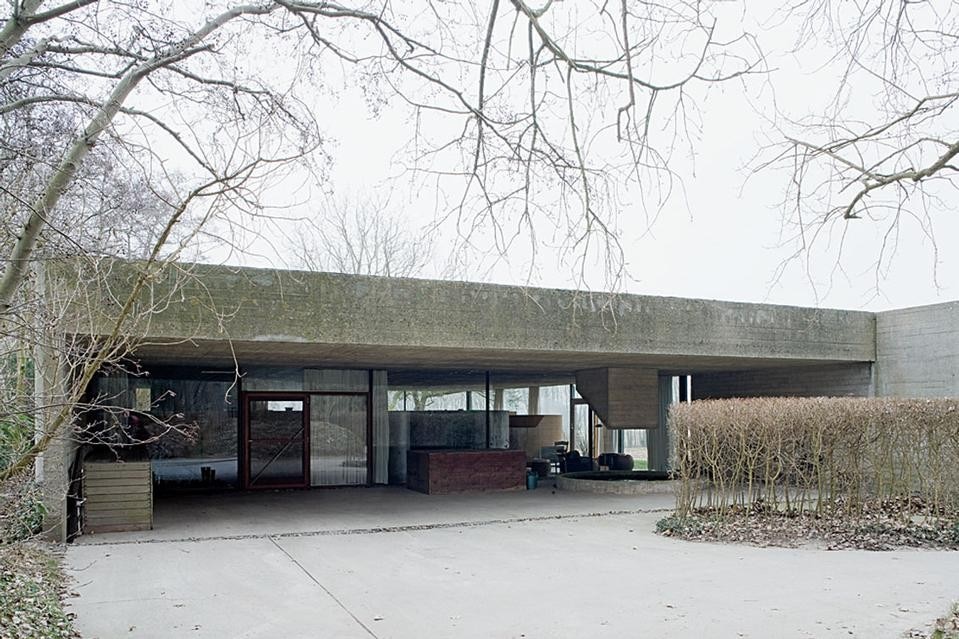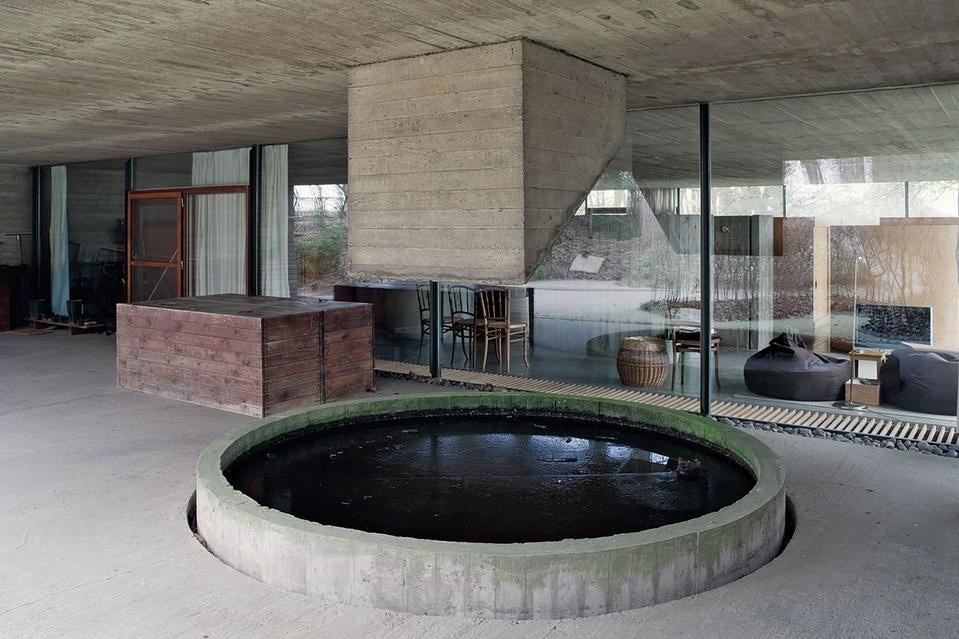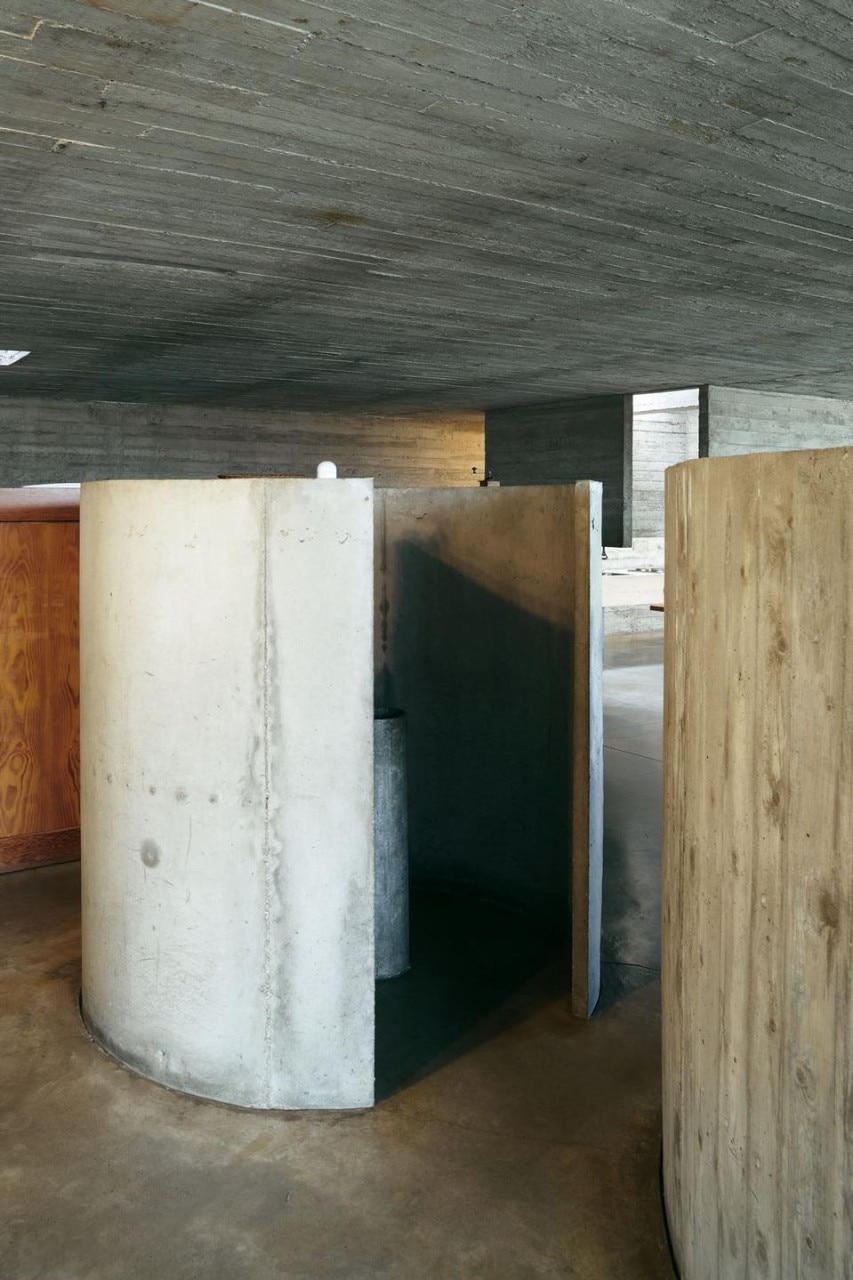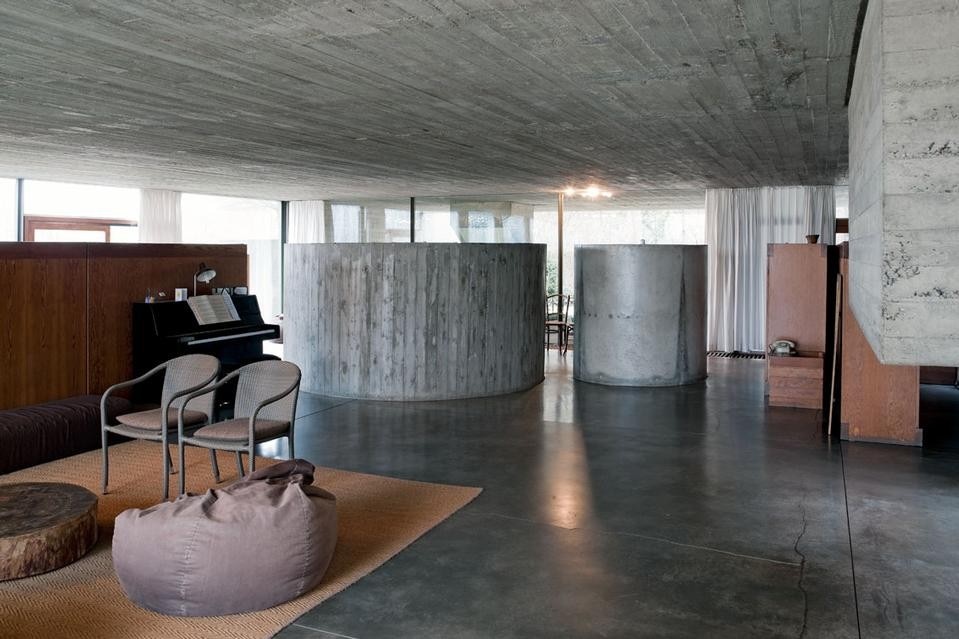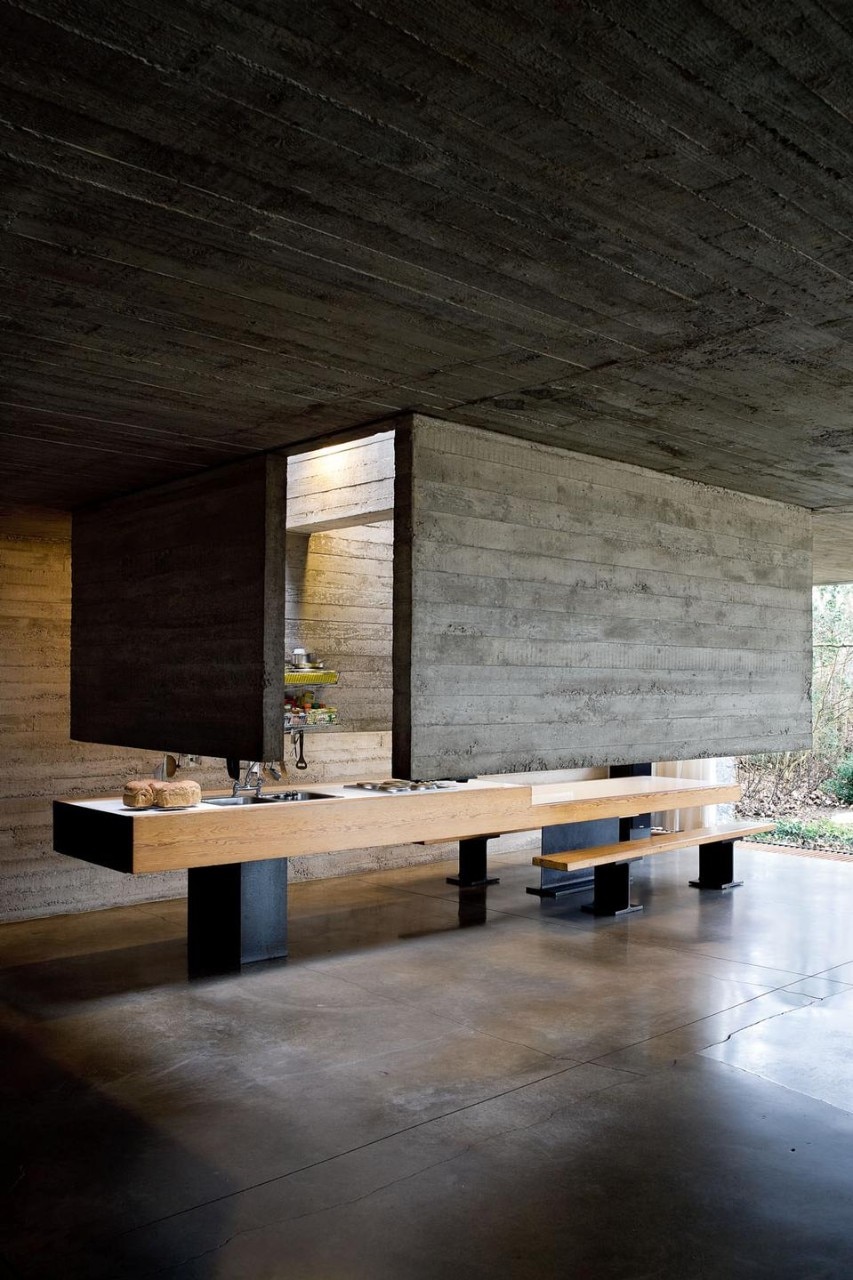Lampens worked almost exclusively with concrete, wood and glass. Formally, his homes were designed to showcase an interior and exterior harmony with their surrounding environment and nature. Borders, cardinal orientation and lines of sight were all central to the placement and construction of the home. Typically, Lampens's houses are closed to the public on one side but are otherwise completely open to nature, with the result that there is always a formal exchange between transparency and closure.
He constantly tried to reach an absolute reconciliation in the antagonism between Le Corbusier's whimsy and Mies van der Rohe's control. He also had deep admiration for Oscar Niemeyer, Romanesque architecture and the bunkers along the Atlantic Wall. For Lampens, these constructions on the Atlantic coast constituted the most beautiful examples of brutalism: "The integration with the sea and the nature is just perfect." Though not directly associated with brutalism, the architecture of Juliaan Lampens stands as a significant variant of this style: materially in his use of raw concrete, and formally in his deployment of the bunker typology. For some time he experimented with raw concrete in order to develop his style of bunker-like exteriors combined with open vistas and sculptural motifs.
Lampens's idea of living was based on various features to form a complete open plan without pillars or even walls, and all the rooms were placed so they seemingly conjoined with each other (kitchen, living room, bedrooms and bathroom all in one open space). Unlike the bourgeois insistence on individuality and patriarchy, this style privileges community and equality within the living space while focusing on life together as a family unit as a way of returning to a more basic way of living.
The clearest manifestation of these ideas can be found in the Vandenhaute-Kiebooms house (1967). Here Lampens took his architecture to the extreme. The absolute openness inside the building encouraged the family (a couple with their four children) to live together in a space that is devoid of acoustic or perceptual privacy. A 14x14 metre square – realised in concrete and glass with a very radical open plan – is protected by a concrete hanging roof that is placed 2.6 metres above floor level and rests on just two slender steel angle beams. The house is totally open on the south and east sides, allowing for its orientation towards a panorama of fields. Screening from the street is accomplished by means of a concrete wall and the fact that the house is built below street level. The only fixed elements within the house are three half-closed concrete cylinders that rise from the floor to stand at the same height as the client Gerard Vandenhaute. Behind these are situated the bath, the toilet and the staircase to the cellar. Dropping down from the ceiling to act as a counterpoint to the cylinders is a hanging concrete square which descends to shoulder level in order to demarcate the kitchen area. The spatial division is completed, however, with the work surface which floats out into the living area to become the dining table.
Aside from this minimal number of fixed elements, the living structure can be freely organised beneath the roof. The sleeping units are composed of beds with adjoining cabinets. The result is a kind of "sleeping niche" that is not fixed into the ground, and hence allows for the continual reshaping and re-imagining of the space and its degrees of privacy. Lampens's domestic architecture has proven hugely successful, not least because his houses are often still inhabited by their original owners. Various families who have lived and grown up in his buildings have stated how Lampens's architecture has the unique sense of space where you live together both with nature and as a family community. Angelique Campensbr />
Juliaan Lampens, was born in 1926 in De Pinte, near Ghent, Belgium. He founded his own architectural practice in Eke in 1950 after studying art at the Higher Institute for Art and Vocational Training of the Sint-Lucas School in Gent. Greatly influenced by his experience of the modern architecture exhibited at the 1958 Brussels World's Fair, Lampens went on to elaborate his personal vision of architecture. His "brutalist" houses, almost domestic fortresses, are introverted units, but also open to merging with the surrounding nature. In 1995 he was awarded the Lampens Belgian Award for Architecture.
